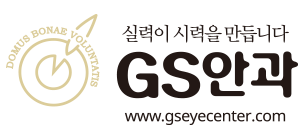LASEK Cost in Korea – How Much Does LASEK Eye Surgery Cost?
Affordable & High-Quality LASEK Surgery at GS Eye Surgery in Korea
LASEK eye surgery is a popular vision correction procedure for individuals with thin corneas or those who are not ideal candidates for LASIK. At GS Eye Surgery in Korea, we provide safe, effective, and affordable LASEK treatments using the latest laser technology and expert surgical techniques.
If you're considering LASEK in Korea, understanding the cost, pricing factors, and additional expenses will help you make an informed decision.
How Much Does LASEK Cost in Korea?
The
cost of LASEK in Korea
varies based on factors such as
technology, surgeon expertise, and clinic reputation.
Average LASEK Surgery Prices in Korea
| Type of LASEK Surgery | Estimated Cost (KRW) | Estimated Cost (USD) (Approx.) |
|---|---|---|
| Standard LASEK | ₩1,200,000 – ₩2,200,000 | $900 – $1,700 |
| Custom LASEK (Wavefront-Guided) | ₩1,800,000 – ₩3,000,000 | $1,400 – $2,250 |
| Trans-PRK (No-Touch LASEK) | ₩2,000,000 – ₩3,500,000 | $1,550 – $2,650 |
| Epi-LASEK (Advanced LASEK) | ₩2,500,000 – ₩4,000,000 | $1,900 – $3,050 |
📌 Note: Prices may vary depending on individual eye conditions, preoperative tests, and post-surgery care packages.
Factors Affecting LASEK Pricing in Korea
Several factors influence the total cost of LASEK eye surgery, including:
✅
Type of LASEK Procedure – Standard vs.
customized treatments impact overall pricing.
✅
Technology Used – Advanced laser systems, such as
Wavefront-Guided or Trans-PRK, may cost more but offer
greater precision and better results.
✅
Surgeon Expertise – Highly experienced ophthalmologists may charge higher fees for their
skill and success rates.
✅
Pre-Surgery Eye Exams – Some clinics include
detailed eye exams in the package, while others charge separately.
✅
Post-Operative Care – Follow-up visits, medication, and recovery aids can affect
overall expenses.
✅
Clinic Reputation & Facilities – Premium eye centers with
cutting-edge equipment and high patient satisfaction rates may have slightly higher fees.
Why Choose GS Eye Surgery for LASEK in Korea?
At GS Eye Surgery, we provide top-tier LASEK treatments at competitive prices while maintaining the highest standards of safety, precision, and patient care.
What Makes GS Eye Surgery the Best Choice?
✅
Experienced LASEK Specialists – Skilled surgeons with
thousands of successful procedures performed.
✅
Advanced Laser Technology – Cutting-edge
excimer and femtosecond laser systems for optimal results.
✅
Customized Treatment Plans – Every LASEK procedure is tailored to the
patient’s vision needs and corneal condition.
✅
Comprehensive Post-Operative Care – We provide continuous
follow-ups and recovery support.
✅
Affordable & Transparent Pricing – No hidden fees,
clear cost breakdown before treatment.
Frequently Asked Questions (FAQ) About LASEK Costs in Korea
1. Is LASEK in Korea cheaper than in other countries?
Yes! Korea offers high-quality LASEK surgery at lower costs compared to the US, Canada, and Europe, without compromising on safety or technology.
2. Does health insurance cover LASEK in Korea?
LASEK is considered an elective procedure, so it is not typically covered by insurance. However, some private insurance plans may offer partial coverage.
3. Are there any hidden fees in LASEK pricing?
At GS Eye Surgery, we provide transparent pricing with no hidden fees. All costs are discussed before treatment.
4. How can I pay for LASEK in Korea?
We accept cash, credit cards, and bank transfers. Some patients may also qualify for payment plans or financing options.
5. What is included in the LASEK cost at GS Eye Surgery?
Our pricing includes:
- Preoperative eye exams
- LASEK procedure with advanced laser technology
- Post-operative check-ups
- Medications for recovery
6. Can foreigners get LASEK surgery in Korea?
Yes! Korea is a top medical tourism destination for LASEK, and GS Eye Surgery offers English-speaking staff and international patient support.
7. How long does it take to recover from LASEK?
LASEK recovery takes longer than LASIK, with most patients achieving clear vision within 1–2 weeks and full stabilization in several months.











